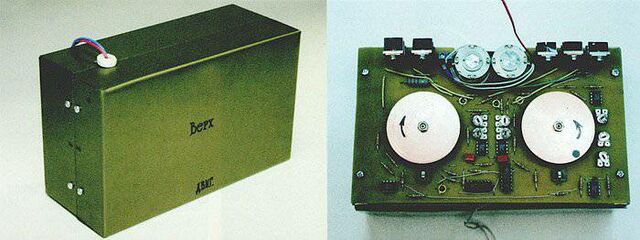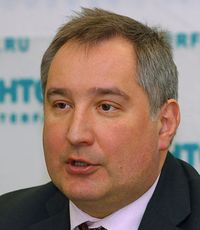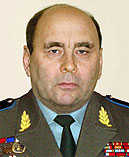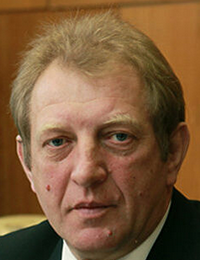Difference between revisions of "File:PlaceFig01.jpg"
| Line 1: | Line 1: | ||
| + | Figure 1 from article [[Place of Science in the Human Knowledge]] |
||
| + | <ref> |
||
| + | http://bp.bookpi.org/index.php/bpi/catalog/book/265 |
||
| + | New Insights into Physical Science Vol. 6. |
||
| + | Authors.. |
||
| + | Dr. Mohd Rafatullah, (Editor) |
||
| + | Senior Lecturer, Division of Environmental Technology, School of Industrial Technology, Universiti Sains Malaysia, Malaysia. .. |
||
| + | Chapter 8. |
||
| + | Place of Science in the Human Knowledge. |
||
| + | Dmitrii Kouznetsov. Pages 136-161. |
||
| + | </ref><ref> |
||
| + | https://mizugadro.mydns.jp/PAPERS/2020insights.pdf |
||
| + | Dmitrii Kouznetsov. |
||
| + | Place of Science in the Human Knowledge. (2020) |
||
| + | </ref>. |
||
| + | |||
| + | Principle of propulsion of the Russian satellite |
||
| + | [[Yubileiny]], [[Gravitsapa]], and leaders of the Russian cosmic program. |
||
| + | ==Gallery== |
||
| + | The figure is combined from the following pictures: |
||
| + | <p style="margin-left:-175px;margin-right:-24px" ALIGN=CENTER> |
||
| + | [[File:Podvig-barona.jpg|200px]] |
||
| + | [[File:1346944263 Gravitcapa.jpg|640px]] |
||
| + | [[File:Dmitry Rogozin.jpg|200]] |
||
| + | [[File:MenshikovVi3119.jpg|200px]] |
||
| + | [[File:Nesterov.jpg|190px]] |
||
| + | [[File:Seliverstov AI-RKZ.jpg|170px]] |
||
| + | [[File:VarochkoFragment.png|200px]] |
||
| + | </p> |
||
| + | |||
| + | ==Description== |
||
| + | First picture, basic principle of propulsion of the Russian satellite [[Yubilleiny]] <ref> |
||
| + | https://www.anekdot.ru/id/596464/Смагин Максим. Подвиг барона. 2012.08.22. (In Russian) Smagin Maxim. Baron’s (Munhausen) feat. |
||
| + | </ref>. |
||
| + | |||
| + | Second picture (top right), the only available image of [[intertioid]] |
||
| + | "[[Gravitsapa]]" |
||
| + | <ref>https://en.topwar.ru/18572-tayny-xxi-veka-roskosmos-provodil-opyty-s-gravicappoy-.htmlhttps://mizugadro.mydns.jp/t/index.php/Roscosmos_conducted_experiments_with_GravitsappoySecrets of the XXI century: Roscosmos conducted experiments with Gravitsappoy? 2012.09.11 |
||
| + | </ref>, that is supposed to provide the support-less propulsion of satellite [[Yubileiny]] due to movement of particle inside the device <ref> |
||
| + | https://www.globalsecurity.org/space/library/news/2005/space-050329-rianovosti01.htmhttps://mizugadro.mydns.jp/t/index.php/2005.03.29.Kislyakov(backup copy) Andrei Kislyakov. Russia to help to develop nuclear-powered spacecraft. 2005.08.01. (RIA Novosti) engines is ready to use them within the framework of the international space program. Consequently, Russia is quite eager to explore deep space with the rest of the world. // In Moscow’s opinion, such is the gist of international accords that were approved by 21 countries and 15 international organizations in the United States latethis March. The concerned parties discussed interplanetary space-fiight plans that were suggested by national space agencies. A document would be expected to formalize the discussion’s results by August 2005.// Russia suggests that those involved in the Martian program use its nuclear rocket engines and propulsion units, |
||
| + | Academician Nikolai Ponomarev-Stepnoi, vice-president of the Kurchatov Institute national research center, noted in early March. He made this statement at an international conference in Moscow that discussed nuclear-powered spacecraft.// We would develop such an engine and propulsion unit by 2017, if the relevant international decision was adopted today, Vladimir Smetannikov, chief designer of the Dollezhal R&D institute, believes. Consequently, it would be possible to launch a manned space ship toward Mars by that time.// According to Ponomarev-Stepnoi, the world’s countries understand that long-range space ights are impossible without nuclear propulsion units. Incidentally, nuclear enginescan be used to accelerate spacecraft, also serving as their power-supply systems.// It should bementioned in this connection that the Energomash science-and-production association (NPO) had developed the first Russian nuclear rocket engine back in 1981. However, its comprehensive tests never took place because of tougher nuclear environmental-safety requirements in space research. The United States also conducted similar experiments, failing to test even a prototype version. // Nonetheless, theoretically nuclear-powered rocket engines cannot be called something entirely new. For its own part, the R&D institute of space systems near Moscow is busy developing a perpetuum mobile (perpetual-motion engine), of sorts. This engine that will have a virtually unlimited service lifecould be used on Earth and in outer space. // Our institute’s staffers have been developing a non-jetpropulsion unit for several years in a row, Valery Menshikov, who heads this institute, said in mid-March. A liquid or solid-state propulsive mass moves along a preset tornado-shaped trajectory insidethis engine, thereby ensuring sustainable propulsion. Quite possibly, we are witnessing a hithertounknown interaction between the propulsive mass and little-studied fields, including the gravitation field, Menshikov explained. .. |
||
| + | </ref>. |
||
| + | |||
| + | pictures at the bottom, leaders of the Russian cosmic program, 2000-2020:<br> |
||
| + | [[Rogozin Dmitry Olegovich]] ([[Рогозин Дмитрий Олегович]]) <ref>https://mizugadro.mydns.jp/t/index.php/Rogozin_Dmitry_Olegovich</ref><br> |
||
| + | [[Valery Menshikov]] ([[Меньшиков Валерий Александрович]]) <ref>https://mizugadro.mydns.jp/t/index.php/Valery_Menshikov</ref><br> |
||
| + | [[Nesterov Vladimir Evgenievich]] ([[Нестеров Владимир Евгеньевич]]) <ref>https://mizugadro.mydns.jp/t/index.php/File:Nesterov.jpg (in Russian)</ref><br> |
||
| + | [[Seliverstov Aleksandr Ivanovich]] ([[Селиверстов Александр Иванович]]) |
||
| + | <ref>https://mizugadro.mydns.jp/t/index.php/File:Seliverstov_AI-RKZ.jpg (in Russian)</ref><br> |
||
| + | [[Varochko Aleksei Grigorievich]] ([[Varochko Aleksey Grigorievich]], [[Варочко Алексей Григорьевич]]) |
||
| + | <ref>https://mizugadro.mydns.jp/t/index.php/File:VarochkoFragment.png (in Russian) </ref><br> |
||
| + | |||
| + | ==References== |
||
| + | <references/> |
||
| + | |||
| + | [[Category:Corruption]] |
||
| + | [[Category:Destruction of science in Russia]] |
||
| + | [[Category:Fraud]] |
||
| + | [[Category:Gravitsapa]] |
||
| + | [[Category:Place of science in the Human Knowledge]] |
||
| + | [[Category:Philosophy]] |
||
| + | [[Category:Roskosmos]] |
||
| + | [[Category:Russia]] |
||
| + | [[Category:Smagin Maxim]] |
||
| + | [[Category:Valery Menshikov]] |
||
| + | [[Category:Yubileiny]] |
||
Latest revision as of 04:48, 10 October 2020
Figure 1 from article Place of Science in the Human Knowledge [1][2].
Principle of propulsion of the Russian satellite Yubileiny, Gravitsapa, and leaders of the Russian cosmic program.
Gallery
The figure is combined from the following pictures:
Description
First picture, basic principle of propulsion of the Russian satellite Yubilleiny [3].
Second picture (top right), the only available image of intertioid "Gravitsapa" [4], that is supposed to provide the support-less propulsion of satellite Yubileiny due to movement of particle inside the device [5].
pictures at the bottom, leaders of the Russian cosmic program, 2000-2020:
Rogozin Dmitry Olegovich (Рогозин Дмитрий Олегович) [6]
Valery Menshikov (Меньшиков Валерий Александрович) [7]
Nesterov Vladimir Evgenievich (Нестеров Владимир Евгеньевич) [8]
Seliverstov Aleksandr Ivanovich (Селиверстов Александр Иванович)
[9]
Varochko Aleksei Grigorievich (Varochko Aleksey Grigorievich, Варочко Алексей Григорьевич)
[10]
References
- ↑ http://bp.bookpi.org/index.php/bpi/catalog/book/265 New Insights into Physical Science Vol. 6. Authors.. Dr. Mohd Rafatullah, (Editor) Senior Lecturer, Division of Environmental Technology, School of Industrial Technology, Universiti Sains Malaysia, Malaysia. .. Chapter 8. Place of Science in the Human Knowledge. Dmitrii Kouznetsov. Pages 136-161.
- ↑ https://mizugadro.mydns.jp/PAPERS/2020insights.pdf Dmitrii Kouznetsov. Place of Science in the Human Knowledge. (2020)
- ↑ https://www.anekdot.ru/id/596464/Смагин Максим. Подвиг барона. 2012.08.22. (In Russian) Smagin Maxim. Baron’s (Munhausen) feat.
- ↑ https://en.topwar.ru/18572-tayny-xxi-veka-roskosmos-provodil-opyty-s-gravicappoy-.htmlhttps://mizugadro.mydns.jp/t/index.php/Roscosmos_conducted_experiments_with_GravitsappoySecrets of the XXI century: Roscosmos conducted experiments with Gravitsappoy? 2012.09.11
- ↑ https://www.globalsecurity.org/space/library/news/2005/space-050329-rianovosti01.htmhttps://mizugadro.mydns.jp/t/index.php/2005.03.29.Kislyakov(backup copy) Andrei Kislyakov. Russia to help to develop nuclear-powered spacecraft. 2005.08.01. (RIA Novosti) engines is ready to use them within the framework of the international space program. Consequently, Russia is quite eager to explore deep space with the rest of the world. // In Moscow’s opinion, such is the gist of international accords that were approved by 21 countries and 15 international organizations in the United States latethis March. The concerned parties discussed interplanetary space-fiight plans that were suggested by national space agencies. A document would be expected to formalize the discussion’s results by August 2005.// Russia suggests that those involved in the Martian program use its nuclear rocket engines and propulsion units, Academician Nikolai Ponomarev-Stepnoi, vice-president of the Kurchatov Institute national research center, noted in early March. He made this statement at an international conference in Moscow that discussed nuclear-powered spacecraft.// We would develop such an engine and propulsion unit by 2017, if the relevant international decision was adopted today, Vladimir Smetannikov, chief designer of the Dollezhal R&D institute, believes. Consequently, it would be possible to launch a manned space ship toward Mars by that time.// According to Ponomarev-Stepnoi, the world’s countries understand that long-range space ights are impossible without nuclear propulsion units. Incidentally, nuclear enginescan be used to accelerate spacecraft, also serving as their power-supply systems.// It should bementioned in this connection that the Energomash science-and-production association (NPO) had developed the first Russian nuclear rocket engine back in 1981. However, its comprehensive tests never took place because of tougher nuclear environmental-safety requirements in space research. The United States also conducted similar experiments, failing to test even a prototype version. // Nonetheless, theoretically nuclear-powered rocket engines cannot be called something entirely new. For its own part, the R&D institute of space systems near Moscow is busy developing a perpetuum mobile (perpetual-motion engine), of sorts. This engine that will have a virtually unlimited service lifecould be used on Earth and in outer space. // Our institute’s staffers have been developing a non-jetpropulsion unit for several years in a row, Valery Menshikov, who heads this institute, said in mid-March. A liquid or solid-state propulsive mass moves along a preset tornado-shaped trajectory insidethis engine, thereby ensuring sustainable propulsion. Quite possibly, we are witnessing a hithertounknown interaction between the propulsive mass and little-studied fields, including the gravitation field, Menshikov explained. ..
- ↑ https://mizugadro.mydns.jp/t/index.php/Rogozin_Dmitry_Olegovich
- ↑ https://mizugadro.mydns.jp/t/index.php/Valery_Menshikov
- ↑ https://mizugadro.mydns.jp/t/index.php/File:Nesterov.jpg (in Russian)
- ↑ https://mizugadro.mydns.jp/t/index.php/File:Seliverstov_AI-RKZ.jpg (in Russian)
- ↑ https://mizugadro.mydns.jp/t/index.php/File:VarochkoFragment.png (in Russian)
File history
Click on a date/time to view the file as it appeared at that time.
| Date/Time | Thumbnail | Dimensions | User | Comment | |
|---|---|---|---|---|---|
| current | 04:48, 10 October 2020 |  | 1,013 × 456 (163 KB) | T (talk | contribs) |
You cannot overwrite this file.
File usage
The following 3 pages use this file:






